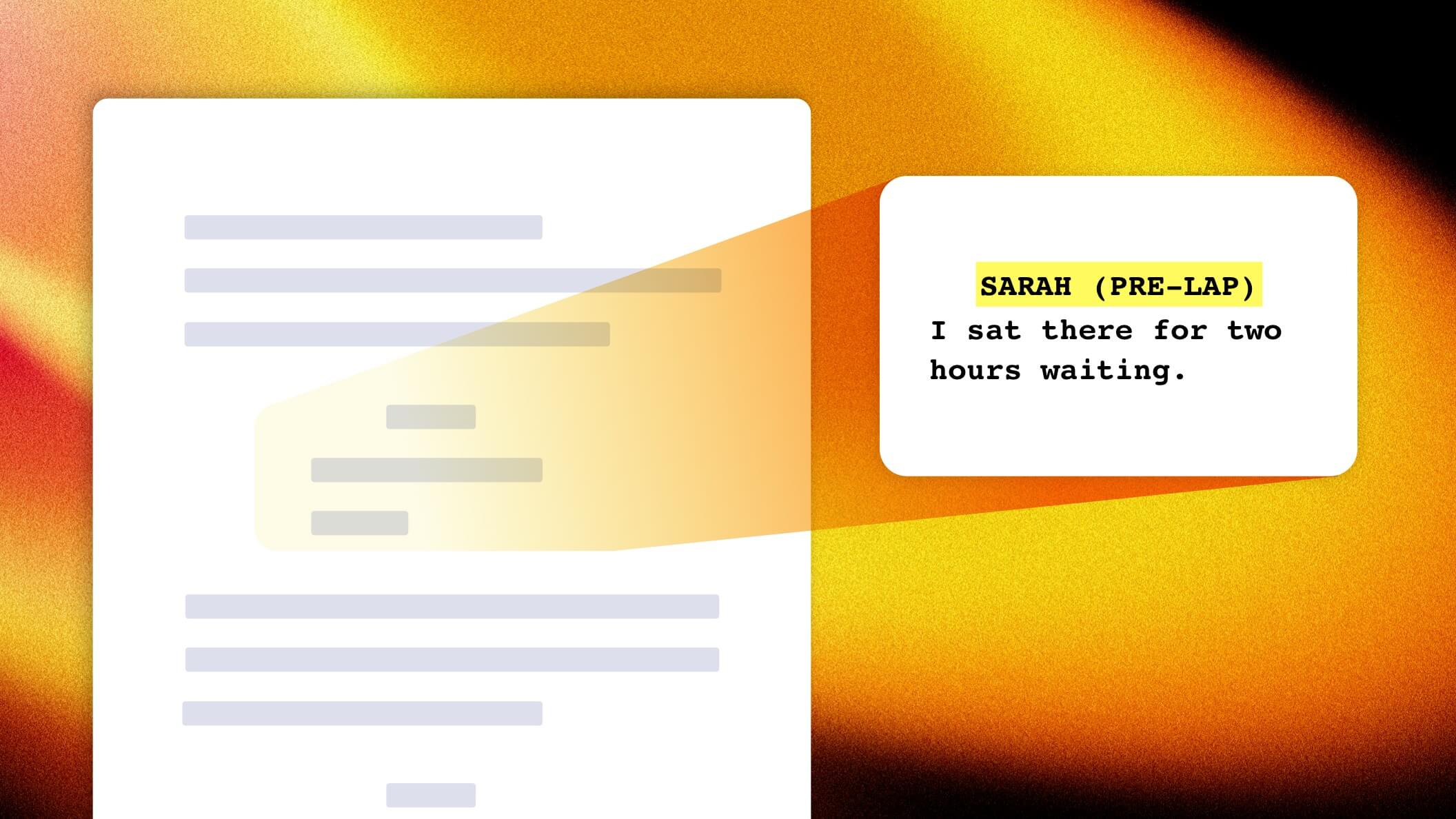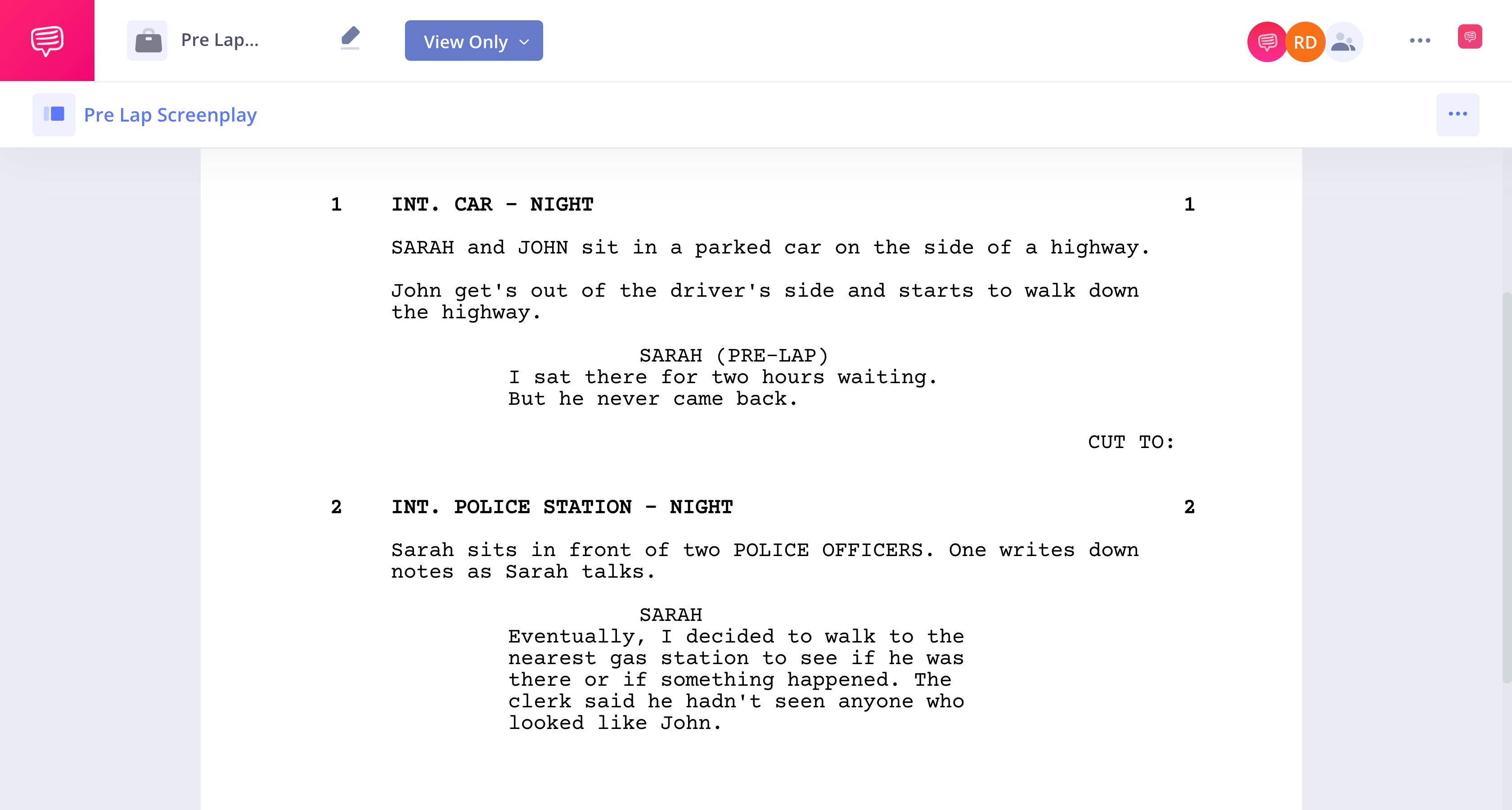If you’re a screenwriter or a filmmaker, you may have heard the term “pre-lap” before. But what is pre-lap in screenplay format, and how can you use it effectively in your scripts? Let’s dive into the definition, when to use them, and how to format them properly in your screenplays.
Watch: Anatomy of a Screenplay — Ultimate Guide
What is Pre Lap in Screenplay Format?
First, let’s define pre-lap
A pre-lap is a useful screenwriting tool to help you write a more cinematic screenplay. Let’s take a look at the definition to better understand its function.
PRE-LAP SCREENPLAY DEFINITION
What is a pre-lap?
A pre-lap, also known as a “pre-lap sound,” is a technique that screenwriters use to create a smooth transition between two scenes in a film or TV show. It involves having a piece of audio, usually dialogue, from the succeeding scene start playing over the final moments of the preceding scene. Pre-laps can also be used to add suspense or foreshadowing to a scene. For example, if a character is about to make a shocking revelation in the next scene, you could pre-lap a few words of their dialogue over the current scene to build anticipation and tension.
What are Pre-Laps used for in screenwriting?
- Building tension
- Creating curiosity
- Smooth transitions
- Show contrast between the two scenes
Formatting Pre-Lap in Script
How to format pre-laps
When writing a pre-lap into your script, there are specific screenplay formatting rules to follow. Pre-laps are written after a character’s name within parentheses.
For example: SARAH (PRE-LAP)
The dialogue that follows is the sound that precedes the scene it belongs to and comes from. This effect is often a decision made in post-production known as the J-cut. However, sometimes screenwriters want to write this effect into the screenplay long before production or editing. This is when a pre-lap is used.
We used StudioBinder's screenwriting app to create an example of how to format a pre-lap in your screenplay:
StudioBinder Pre-Lap Screenplay Example
As shown in the example, a pre-lap is written as a character extension the same way “off camera,” “off-screen,” or “voice-over” is written.
When exactly would you use a pre-lap and why? Let’s look at a few reasons.
Related Posts
Pre-Lap Screenplay Guideline
When to Use a Pre-lap
Pre-laps can be a useful tool to help create a seamless transition between scenes in your screenplay, but when should you use them?
Here are a few guidelines to keep in mind:
Use Pre-laps Sparingly
Pre-laps should be used sparingly to avoid overusing them and losing their effectiveness. Too many pre-laps can make the transitions feel predictable and lose their ability to surprise or heighten suspense.
Use Pre-laps to Build Tension
Pre-laps can be used to build tension or suspense before a scene. For example, if the following scene involves a shocking revelation or a dangerous threat, pre-lapping a few words of dialogue or sound effects beforehand can set the tone for the audience and increase their engagement.
Use Pre-laps to Show Contrast
Pre-laps can also be used to create contrast between scenes. For example, if the preceding scene is quiet and peaceful, but the following scene is loud and chaotic, pre-lapping a sound effect or snippet of dialogue from the next scene can create a distinct dichotomy.
Pre-laps are a valuable tool that can help screenwriters create more fluid, connected, and engaging screenplays. Use them wisely, follow the proper formatting, and watch your scenes flow effortlessly from one to the next.
Related Posts
Up Next
What is a J-Cut in Film?
As we mentioned above, a pre-lap is a screenwriting version of the J-cut in editing. For more insight on the function and value of a J-cut for an editor, check out our next article.

